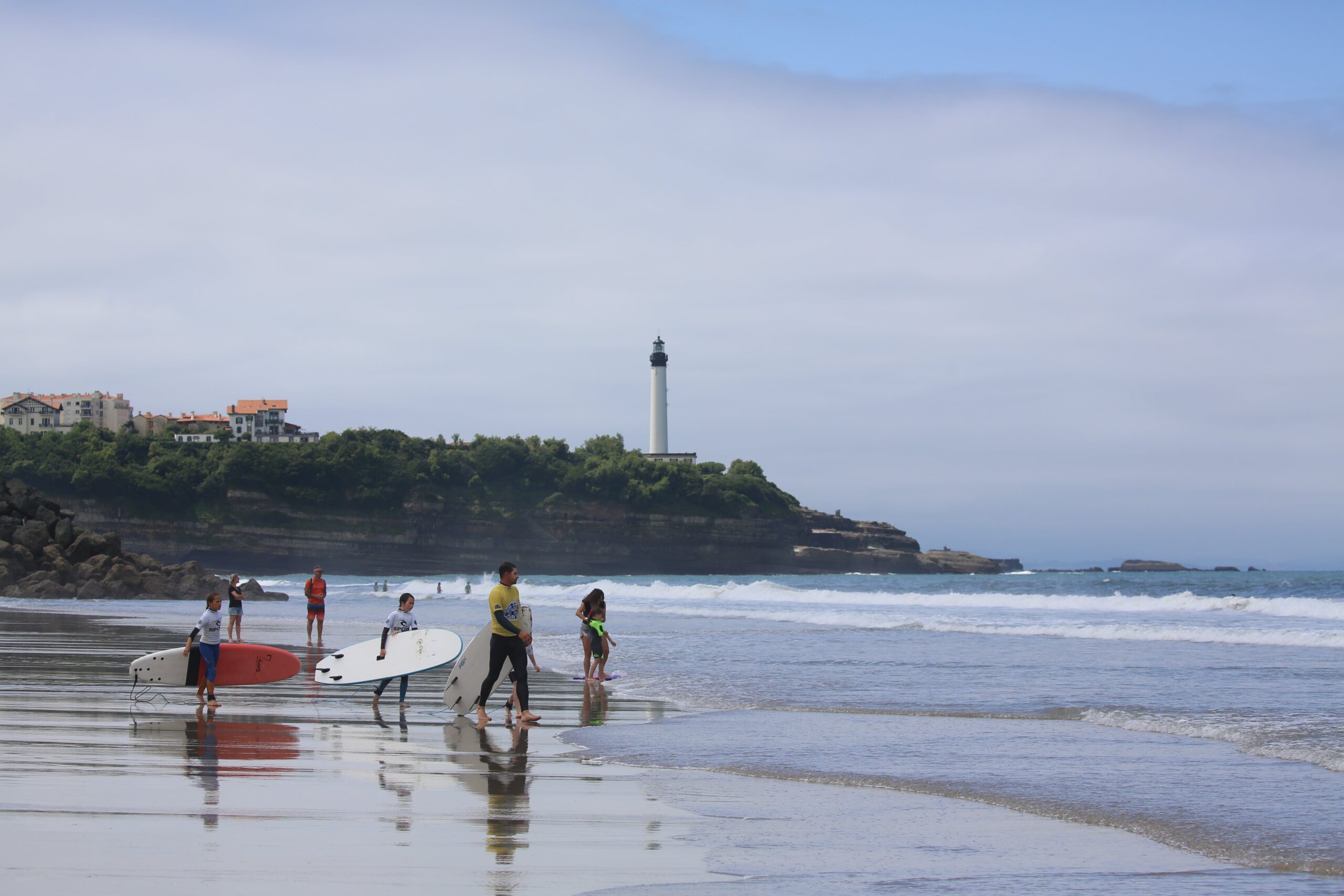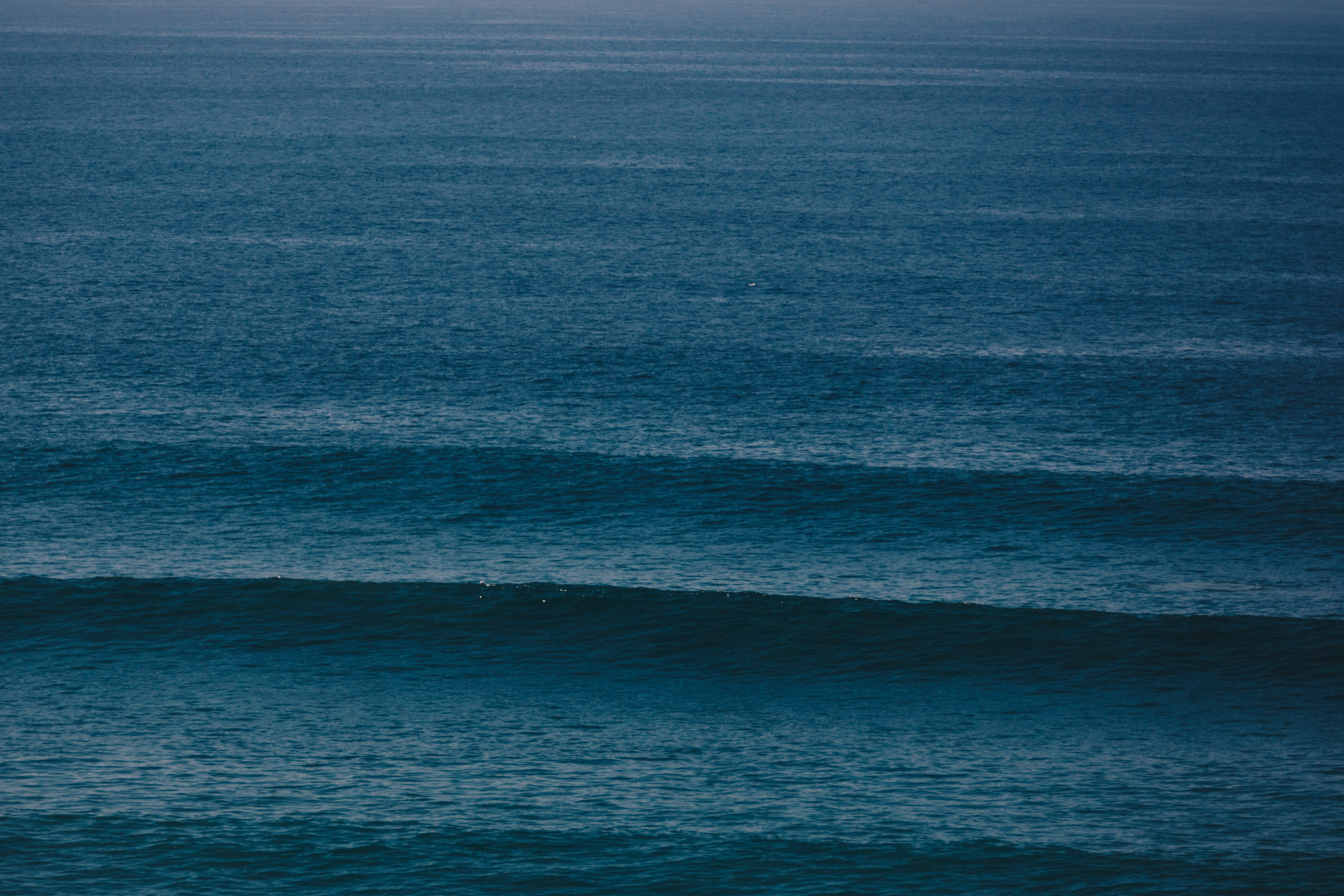
Improve your surfing in Anglet by understanding weather and tides !
Do you know why tides and weather are important in surfing? These two elements play a crucial role on the beaches of the Basque Coast influencing surfing conditions. Understanding their impact is fundamental to fully enjoying a surfing session on the beautiful beaches of Anglet.
More than just a sport, surfing is a way of life that offers a true connection with the ocean. Becoming a surfer on the Basque Coast isn’t just about catching waves while standing on your board, it’s also about understanding and anticipating the impact of weather and tides on the waves to surf in the best conditions.
Today, our team explains the influence of weather and tides on surfing and the importance of mastering climatic conditions for surfers.
Tides in Surfing
The tide is a natural cyclical phenomenon resulting from the gravitational forces exerted by the moon, the sun, and the rotation of the earth. Understanding the tidal cycle is essential for choosing the right time to surf on Anglet beaches. It lasts about 12 hours and 25 minutes, with a shift of 50 minutes each day.
Tides cause variations in sea levels, and the amplitude of this variation is measured using a coefficient between 20 and 120. It indicates the height difference between successive high and low tides. When the tide reaches its highest or lowest point, it remains stable for a few minutes before changing direction.

JOHN & TIM’s TIPS
To learn to surf in Anglet, mid-tide is the best timeto get ito the water and catch some waves.
More information about tides ?
Find the Anglet tides calendar by clicking here.
Check out the Surf Session article: “10 choses à savoir sur les marées”.
Weather in Surfing
The weather plays a major role in wave formation, and wind is one of the most important factors to consider. Near the coasts, the wind is produced by temperature exchanges between the ocean and the air above the land. Specifically, the wind direction and strength determine the quality of surfing sessions.

OFFSHORE WIND
It blows from the land to the sea and is generally favorable for surfing because it creates well-formed, clean waves.

ONSHORE WIND
It blows from the sea to the land and can make the waves messy and harder to surf.

SIDE SHORE WIND
It blows along the beach and usually creates currents in the water.
Besides the wind, other meteorological aspects such as atmospheric pressure, air temperature, and precipitation can influence wave quality. For example, a rapid drop in atmospheric pressure can indicate an approaching storm.

JOHN & TIM’s TIPS
For an ideal surfing session on “La Chambre d’Amour” beaches in Anglet, a light offshore wind (east wind) is ideal.
As you’ve understood, anticipating the impact of weather and tides on waves to surf in the best conditions is essential.
During your surf lessons and courses with John and Tim Surf School, before each session, our expert coaches provide you with information on the conditions and safety advice.
Want to learn to surf ?
Don’t wait any longer and book your next lesson with us !




